Chinese tourists are golden harbingers
Updated: 2014-09-26 07:40
By William Daniel Garst(China Daily)
|
||||||||
The National Day holiday is round the corner and, if things go like last year, this fall's "Golden Week" too will be a "golden mess". While many Chinese are going to opt for "staycations" (stay at home) during the holiday, a large number will combine the long break with paid holidays to head overseas to avoid the travel madness in the country. Things seem to be in favor of this group, because the yuan is once again on the rise and popular tourist destinations abroad are typically less crowded in early October.
Indeed, the past five years have seen an explosion of overseas travel by Chinese people. Last year, 98 million Chinese traveled abroad - nearly double the 52 million who did so in 2010. This year, the figure is expected to top 100 million.
During his recent visit to the Maldives, President Xi Jinping said: "We should also educate our citizens to be civilized when traveling abroad. Don't litter water bottles, don't destroy their coral reef. Eat less instant noodles and more local seafood." The remark, although made in a lighter vein, partly reflects the growing number of complaints against Chinese tourists. This calls for tourism authorities to take strict measures to ensure that Chinese tourists respect the norms and cultures of the countries and/or regions they visit.
However, if some countries and regions use false cases to demonize Chinese mainland tourists, they will suffer a big loss.
The huge expansion of China's outbound tourism has created a bonanza for retailers and service providers in foreign tourism hotspots. Globetrotting Chinese tourists spent $129 billion last year, and according to a July 2014 Hotel.com China International Travel Monitor Survey, they shelled out an average of $1,000 a day, excluding accommodation costs, while vacationing.
Foreign destinations are courting big-spending Chinese tourists. Harrods in London now has 100 Union Pay terminals scattered throughout the store and is recruiting Mandarin-speaking staff to serve Chinese tourists - Paris-based luxury goods store Printemps has been doing the same. In Canada, ski resorts are scrambling to hire Mandarin-speaking ski instructors - some 5-10 million Chinese now go skiing, compared with just 10,000 in 1998.
The Chinese leadership's crackdown on corrupt officials is unlikely to curb the spending of Chinese people traveling abroad. While some government officials did exploit their positions to travel abroad and splurge on luxury goods, with about 100 million Chinese now traveling overseas, such officials' share of outbound Chinese tourism and spending is certainly miniscule.
A much more important factor that could slow the growth of aggregate spending by China's outbound tourists is the shift in the kind of Chinese traveling abroad. According to the CITM survey, big spending tourists - those blowing up $1,619-8,095 a day - comprised 17 percent of those surveyed. Twice as many (36 percent) spent $81-324 a day, while 2 percent spent $324-810 a day.
With China set to institute far-reaching financial reform, the yuan is likely to appreciate in the long-term. That development, combined with the growth of the middle class and improved air transportation, will further increase the numbers of less affluent outbound tourists. These budget travelers will go overseas not so much to shop, but to experience foreign cultures and natural sceneries.
This is not to say that Chinese overseas tourists will soon cease being the goose that lays the golden egg for those who cater to them in overseas travel destinations. But the golden eggs will become, at least on a per capita basis, considerably smaller as the share of big spenders who have driven up that average falls.
That is all for the best. It will surely be a great day for China's overseas image when its citizens traveling abroad are appreciated not just for their role in boosting local economies, but for their interest and engagement in local cultures as well.
The author is a senior consultant at Hill + Knowlton Strategies.
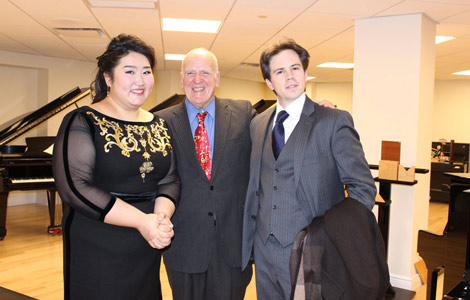
 Music at her fingers
Music at her fingers
 Across America Over the Week (Jan 16 - Jan 22)
Across America Over the Week (Jan 16 - Jan 22)
 Spend Chinese New Year in style
Spend Chinese New Year in style
 Ili river valley becomes a popular destination for swans
Ili river valley becomes a popular destination for swans
 Philip Ma: from scientist to businessman
Philip Ma: from scientist to businessman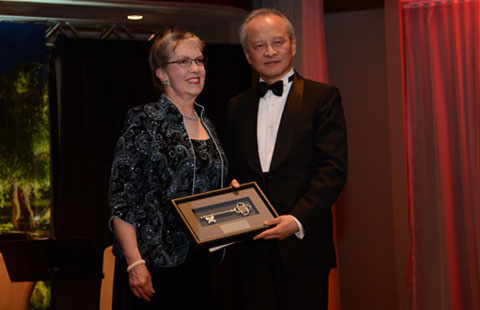
 Birmingham's Spotlight on China dinner
Birmingham's Spotlight on China dinner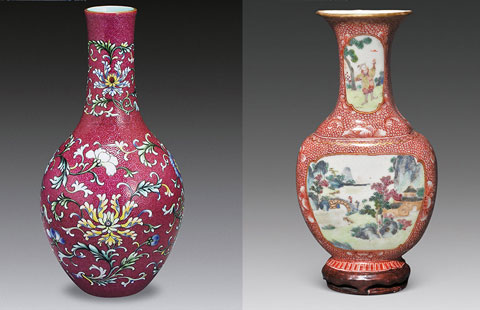
 How to distinguish doucai, wucai, Famille-rose and enamel porcelain
How to distinguish doucai, wucai, Famille-rose and enamel porcelain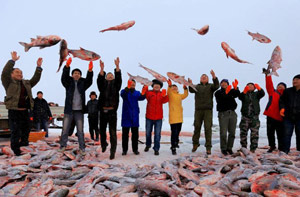
 Xinjiang lake in bumper fishing season
Xinjiang lake in bumper fishing season
Most Viewed
Editor's Picks

|

|

|

|

|
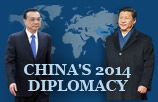
|
Today's Top News
Houston's SW Chinatown
China to focus on reforms, opening of capital market
Slowdown brings new risks to banks
Trade group calls for BIT
Market status for China is 'political' issue
Birmingham's Spotlight on China dinner
Bank takes renminbi-clearing seriously
Traditional Garb
US Weekly

|

|








